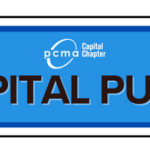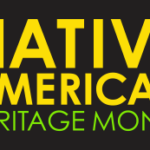Put your money where your mouth is.
Walk the walk.
Practice what you preach.
We’ve heard ‘em all before but for the American Geophysical Union (AGU), it’s what we are all about.
As the largest Earth and space science society, a thriving, sustainable, and equitable future is the AGU north star. We renovated our Headquarters to reflect this central mission and in doing so, created Washington, DC’s first net zero energy commercial renovation. Yet even with a world class home base and a community of passionate scientists, creating sustainable meetings can be a challenge.
In June 2020, our Board of Directors formed a Sustainability Advisory Group to provide feedback on expanding virtual participation and engagement at AGU meetings and increasing overall sustainability for events, particularly related to carbon footprint.
The idea of sustainable meetings and travel isn’t new. Organizations like Greenbuild, Society for Sustainable Events (SFSE), and the Events Industry Council (EIC) lead with their best practices. And AGU’s Sustainability Advisory Group called on these strategies when formulating their own roadmap in 2020. Staff and committees still begin planning for every meeting and event looking to address:
- Affordability to scientists
- Synchronous and asynchronous engagement
- Technology inequality
- Travel impact
Recommendations, presented to the AGU Board of Directors in September 2020, included the following:
- Make meetings accessible and inclusive regardless of geography
- Make meetings accessible and equitable through program and logistical support
- Leverage partnerships to advance sustainability broadly
- Provide multiple avenues to increase sustainability and provide open data
- Be transparent on all initiatives
These recommendations moved us beyond just applying a sustainable meetings checklist. It can be like a game of whack-a-mole. Do we not serve meat? Eliminate paper? How do we measure travel? Instead, taking a wider approach and understanding all the tools available can maximize sustainability.
Checklists, though a good start, can have unintended consequences. Understanding location infrastructure is critical. In one city, recycling was challenging as they were rebuilding after a storm event. Recyclables needed to be transported to another state, thus adding carbon cost, not reducing it. AGU worked with the location to understand their approach rather than shaming them for not being able to honor our request. We learned from one another.
A holistic approach for sustainability prepares planners beyond the pass/fail of a checklist. Utilize these guidelines and you’ll improve the sustainability of your own events:
- Develop your own community-based strategy.
- Leverage resources of those around you.
- Don’t get overwhelmed, begin where you can, work with your partners.
- Leverage tactics, like offsets, judiciously, and understand the specific gains of those tactics.
- Understand how your tactics translate culturally (e.g., dietary decisions, time zones, etc.).
Lauren Parr | Senior Vice President, Meetings and Learning
American Geophysical Union/Advancing Earth and Space Science
———————————————-
GREEN PATH Resource Roundup
Please continue to send your contributions to our living green path resource roundup – help us all stay current and aim high with our event sustainability designs by sending any additional sources here to be added to this collection and shared across our community in future sustainability articles this year.





